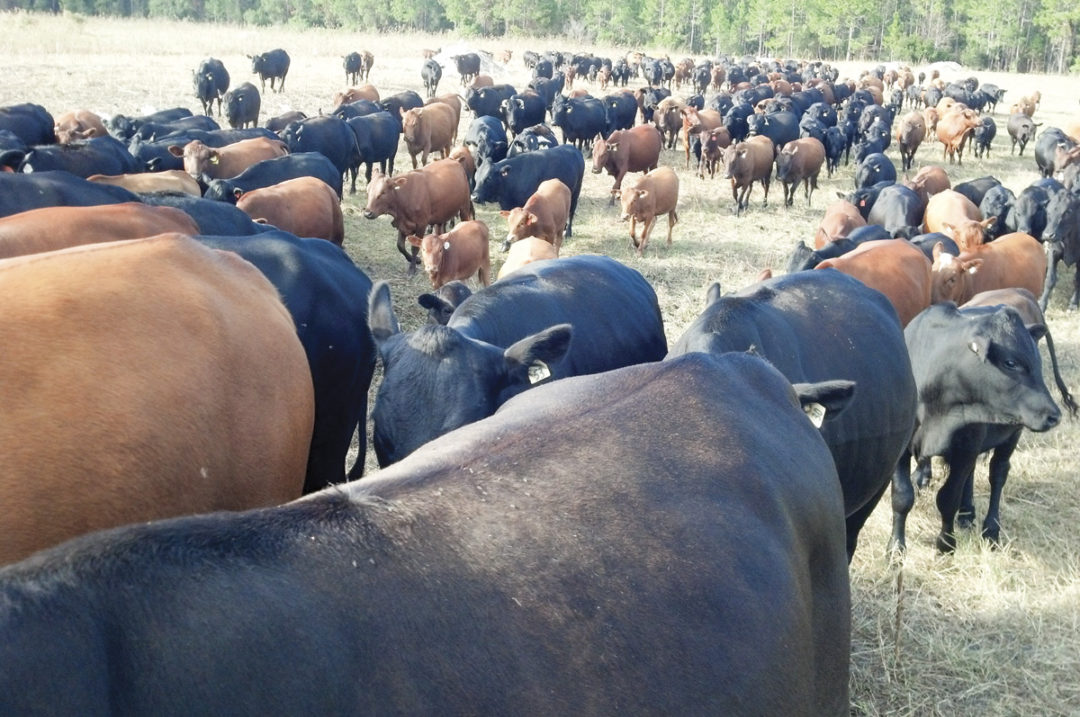There are basically two types of beef cattle: European and British breeds descended from the original wild cattle of those regions (Bos taurus) and the heat-tolerant animals of the tropics, which include hump-backed, droopy-eared Zebu (Bos indicus) of India and Asia. Both types exist in abundance in Africa, as well as a genetically mixed subgroup that includes the Sanga, a mix of the indigenous, heat-tolerant Bos taurus types and Zebu.
Almost all breeds in the U.S. today are of British and European descent, but many ranchers in Southern areas prefer cattle with some Zebu influence. American Brahman were developed from several strains of Bos indicus cattle imported from India between 1854 and 1926, and Zebu cattle from Brazil. Several American breeds and composites have been created using Brahman, including Santa Gertrudis, Brangus and Beefmaster. In recent years, African types with less Zebu genetic influence and more Bos taurus have been introduced.
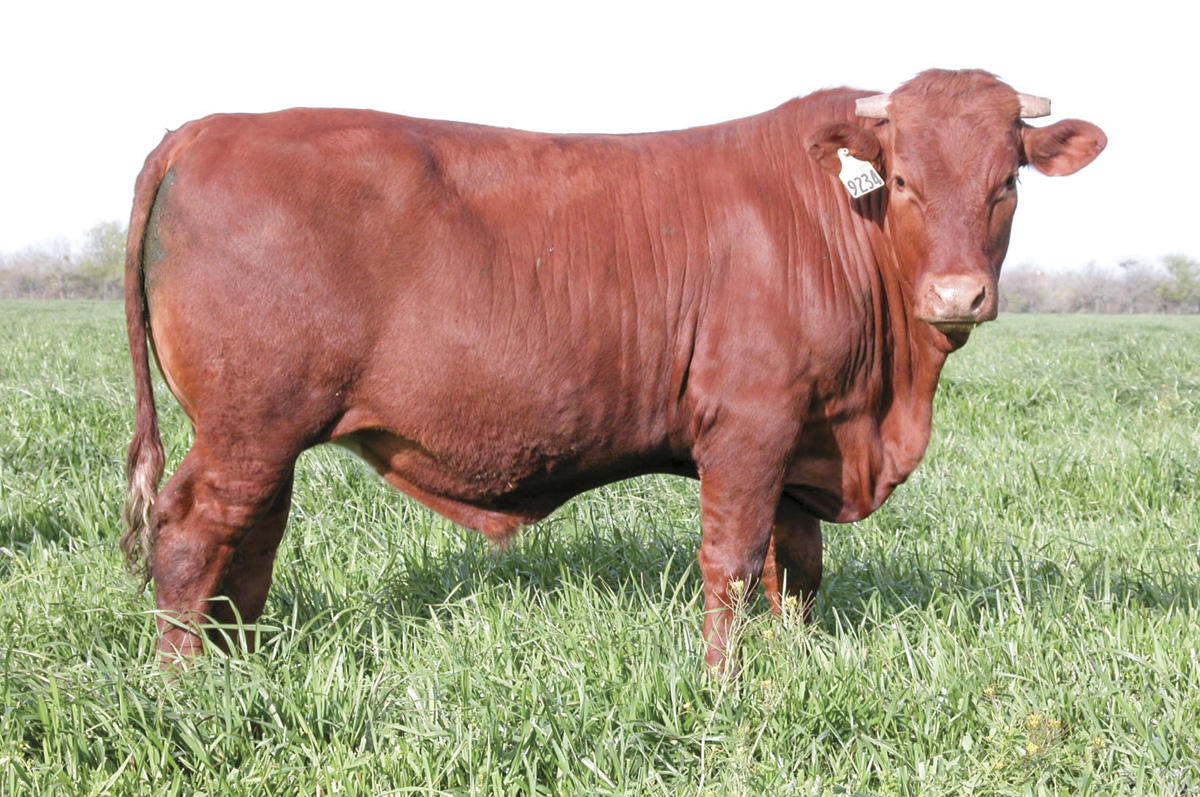
Bonsmara cattle, like this steer, combine the heat resistance of the Afrikaner with the fertility and meat quality of Hereford and Shorthorn. Photo by Ron Gill.
Bonsma’s influence
South Africa’s Jan Bonsma, a famous cattle geneticist and student of breed efficiency – selecting for the most functional traits – was involved in development of two new breeds, the Bonsmara and Beefmaster. He developed the Bonsmara starting in 1936 by crossing native Afrikaner cattle with Hereford and Shorthorn to develop a hardier animal than British breeds, with better beef quality and fertility than the Zebu.
The composite was created after many crosses and back-crosses to create a blend of 5/8 Afrikaner (Sanga-type cattle), 3/16 Hereford and 3/16 Shorthorn. Sanga are indigenous Bos taurus animals of sub-Saharan Africa, sometimes termed as a subspecies: Bos taurus africanus.
Bonsma’s concept of functional efficiency was to adapt cattle to the environment and not the other way around. He was an adviser to Tom Lasater, who in the 1930s created Beefmaster in southern Texas – the first American composite with three or more breeds: roughly one-half Bos taurus (Hereford and Shorthorn) and one-half Bos indicus (Brahman).
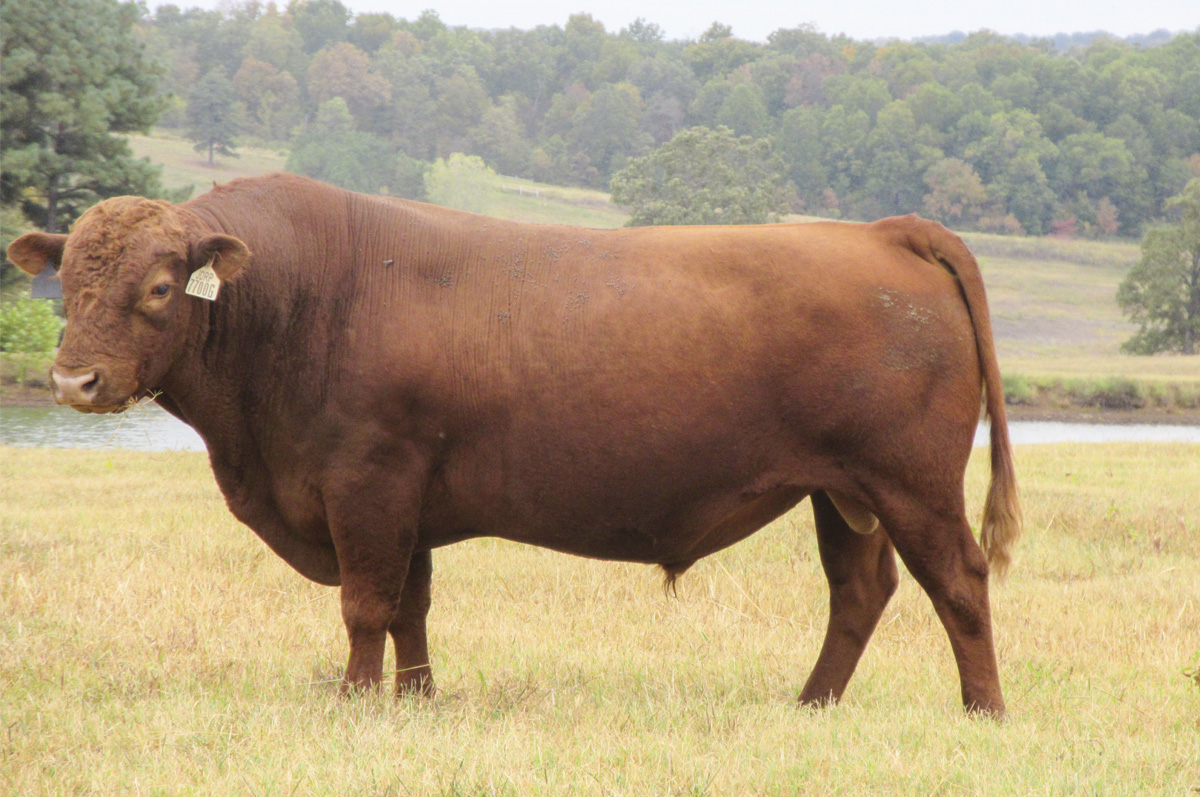
Rob Pierce’s heat-tolerant composite bull Generalissimo is pictured. Photo provided by Rob Pierce.
Barzona
Barzona is another U.S. composite for harsh, hot environments. According to Frank Fitzpatrick, who has about 600 Barzona on his 5 Bar Ranch in California, these cattle were developed in the mountains and deserts of Yavapai County, Arizona, starting with crossbreds owned by the Bard family.
“In 1940, the Bards and the King Ranch partnered to import 80 Afrikaner bulls from South Africa,” says Fitzpatrick. “The King Ranch took 40 bulls, and Bard took 40 to Arizona. Bard also bought Santa Gertrudis bulls from the King Ranch.”
In 1942, Bard bought a herd of purebred mountain-raised Hereford cows to breed to these bulls.
“The new breed was built on their daughters from the Afrikaner and Santa Gertrudis crosses,” Fitzpatrick relates. “Afrikaner has heat tolerance, tick resistance, quiet disposition, fairly high fertility under harsh conditions and good meat quality. Hereford was chosen for early maturity, good muscling, close sheath and range ability in rugged pastures.” Santa Gertrudis bulls (5/8 Shorthorn and 3/8 Brahman) added a touch of Brahman for browse utilization, low birthweight and milking ability.
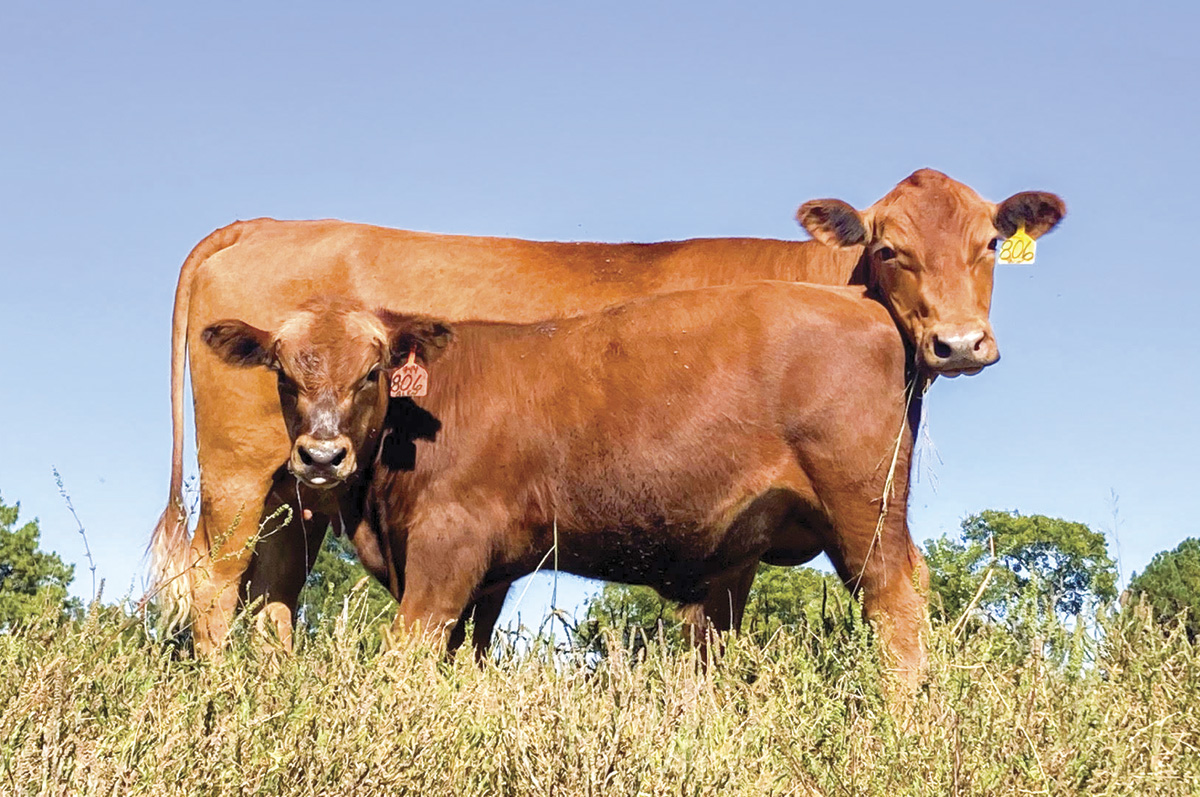
A half-Romosinuano cow grazes with her calf. Photo provided by Rob Pierce.
Desirable traits from everywhere
Bos indicus are widely used in tropical and subtropical climates because heat tolerance and parasite resistance are crucial, but these cattle also have a reputation in some circles for excitable temperament, slower growth, later maturity and variation in meat tenderness. Some breeders have experimented with Bos taurus breeds that are heat-tolerant without the aforementioned drawbacks. According to David Riley, professor of animal breeding and genetics at Texas A&M University, the most heat-tolerant Bos taurus breeds have Spanish and/or African origins and include Mashona, Criollo, Romosinuano, Tuli and Senepol.
Senepol were developed on the Caribbean Island of St. Croix as a mix of the English Red Poll breed, N’Dama from West Africa, Criollo and a trace of Zebu. Senepol combines heat tolerance and insect resistance with the docile nature, good meat and milk production of the Red Poll.
“Tuli are a Sanga type from what is now Zimbabwe and may be a mix of Bos taurus and Bos indicus cattle,” says Riley. “Both Senepol and Tuli crossbred cows are smaller-framed than F1 Brahman-Angus. They perform well.
“Several Bos taurus breeds in South America are descendants of cattle brought from Spain and Portugal when the Americas were explored by Europeans. They acquired some tropical adaptation and are collectively called Criollo cattle.”
In the 1990s, Keith Gregory and Larry Cundiff from the USDA’s Agricultural Research Service (ARS) visited South America to find a breed for evaluation in the U.S.
“They felt the Romosinuano from Colombia had potential. Embryos were imported and an evaluation herd established at Brooksville, Florida,” says Riley. “We evaluated Romosinuano as straightbreds and crossbreds with Angus and Brahman.” Mashona and Tuli bulls were also bred to heifers in a project in Florida, with the crossbred calves sent to be fed out in Texas.
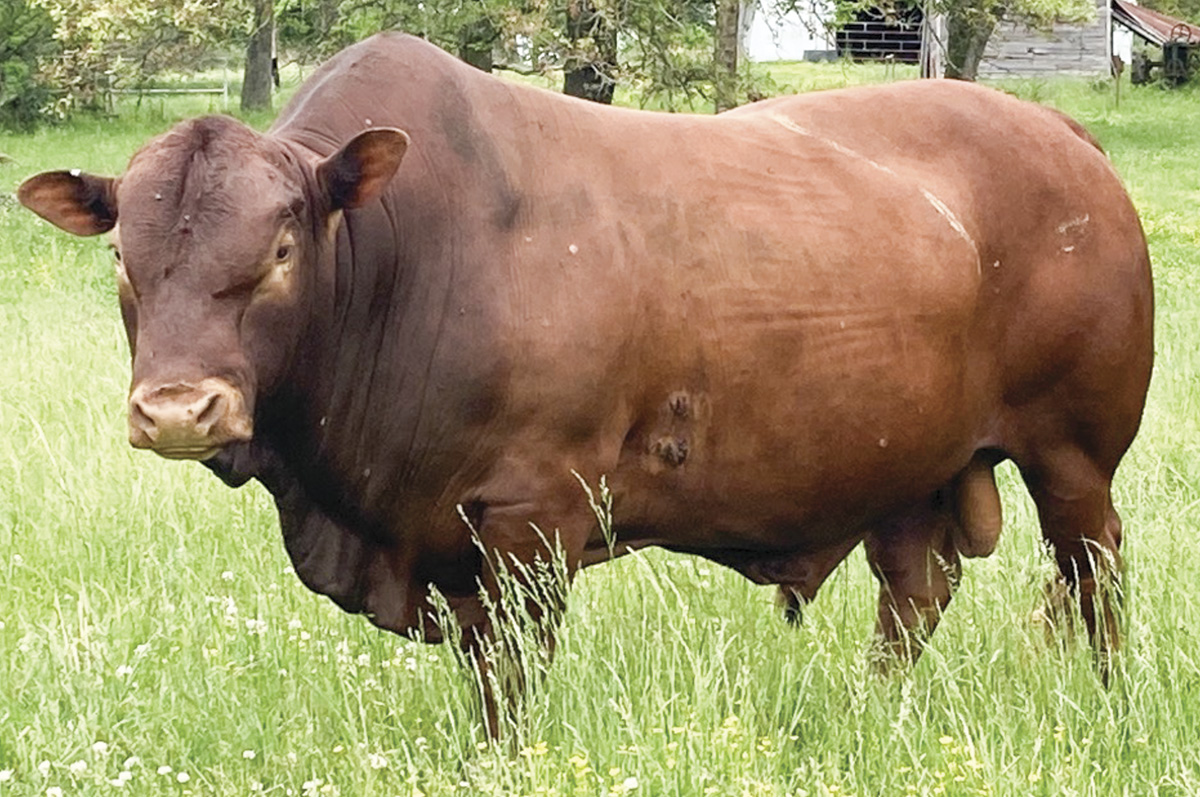
A full-blood Mashona bull owned by Rob Pierce is pictured. Photo provided by Rob Pierce.
Mashona
Jaime Elizondo, who grew up in Mexico and now manages a ranch in Florida with Mashona cattle, has been creating efficient genetics for a hot environment.
“My uncle developed the first composite in Mexico, called Tropicarne, which in Spanish means ‘tropical beef,’” says Elizondo. “This composite utilized Barzona, Charolais, Senepol, Brahman and Angus, with most emphasis on Senepol.”
Jim Weaver brought the first Mashona to the U.S. from Zimbabwe as embryos in 1995.
“These are very hardy cattle, being heat-, disease- and parasite-resistant,” says Elizondo. “They are a Bos taurus Sanga breed with high fertility, early marbling and early maturity. When Jim Weaver sold his herd, this Florida ranch purchased almost all the cows. We want to keep these cattle pure, as a genetic resource for other ranchers.”
Originally, Mashona were mainly Bos taurus that came from Egypt, descended from African ancestors that were different from either European or Indian cattle.
“African people raised them for meat,” Elizondo says. “A cow that was not a good meat animal, or aggressive, was not selected for breeding. If a cow escaped the enclosure, it would be eaten by lions and hyenas.”
This natural selection weeded out problem animals.
“In India, cattle were revered and not killed for meat,” he continues. “If a cow had a bad temper they left her alone; she could do what she wanted.”
This meant that bad disposition was perpetuated in some of the Indian Bos indicus animals, whereas the African cattle were generally more docile.
“They are the nicest and gentlest of all the breeds I’ve ever handled,” says Elizondo. “They lived in kraals [enclosures to keep out lions and other predators] in Africa and were taken out to graze during the day, with herders.”
Pharo Cattle Company (PCC) in Cheyenne Wells, Colorado, has used Mashona bulls in some of their programs to supply composite bulls to commercial cattlemen in the southern U.S. PCC has many cooperating producers around the country, raising cattle that meet the PCC philosophy: selecting for growth and performance; and vital economic traits like fertility, calving ease, moderate size, fleshing ability, structural correctness, disposition and longevity. For bull customers in the Southeast, however, heat-tolerant genetics had to be added. Some PCC cooperative producers in the southern U.S. are now using composites containing Mashona, Senepol and/or Romosinuano.
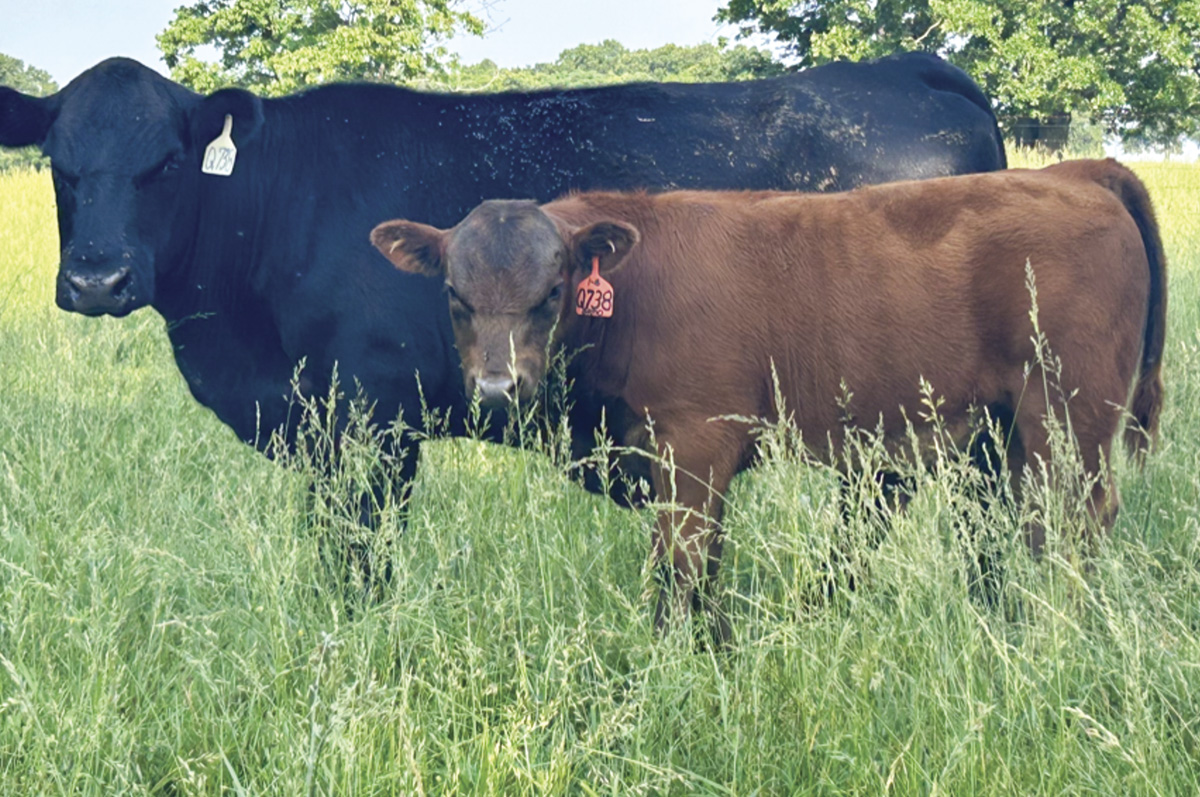
Rob Pierce believes the animal best suited to his environment in northeastern Oklahoma is a combination of Corriente, Mashona and Red Angus genetics. Photo provided by Rob Pierce.
Corriente
Rob Pierce is a cattleman in northeastern Oklahoma where the climate is hot and humid and much of the forage is fescue. Endophyte-infected fescue has an adverse impact, impairing blood circulation and hindering cattle’s ability to handle hot weather, and negatively impacts fertility.
“To breed in summer for a spring calf was difficult with the heat, humidity and fescue, so I began raising Corriente,” says Pierce.
Corriente are small and originated from Criollo cattle brought to the Americas by the conquistadors. For several hundred years, some of them lived in northern Mexico’s arid climate and adapted to the heat.
“Corriente cows could breed successfully here, so I crossed them with Red Angus to keep the crossbred females,” says Pierce. “Those crossbreds handled the heat and had high conception rates.
“I met some breeders in the PCC program who were also trying to create heat-resistant cattle without using Brahman genetics,” he continues. “I started adding Mashona to my cross, and now I think the best cross for my region will be a quarter Corriente, quarter Mashona and half Red Angus.”
Doug Marburger has been breeding cattle many years in Texas, starting as a manager for a Red Brangus ranch in the mid-1980s.
“My first experience with different genetics was with some young bulls Al DeWit sent for me to develop,” he says. “Al is one of the cooperative producers for PCC and sent one heat-tolerant bull, a Romosinuano-Red Angus cross, along with some British-breed bulls. I noticed that this bull was out grazing mid-afternoon when it was 100-plus degrees and humid. All the other cattle were under the shade, panting.”
Richard Luciano is another cooperative producer for PCC. “I bought 12 full-blood, black Mashona heifers for [Luciano],” says Marburger. “They were also out grazing mid-day when it was hot and other cattle were panting and miserable. Even though they were black, they didn’t seem bothered by the heat. I’ve used Brahman-cross cattle all my life, and they are good in the heat, but I’d never seen other cattle that could stand the heat like this.”
Part of the PCC philosophy is calving in sync with nature. That makes sense, to calve in May, but if it means breeding in the hottest part of summer, the cows and bulls of British and European breeds are adversely affected. Cow fertility drops and bulls don’t go out and work.
“The PCC heat-tolerant composites can handle it,” Marbruger says. “Cows are still cycling when it’s hot, and the bulls keep breeding cows. This is a huge deal; if you don’t get calves, you can’t stay in business.”
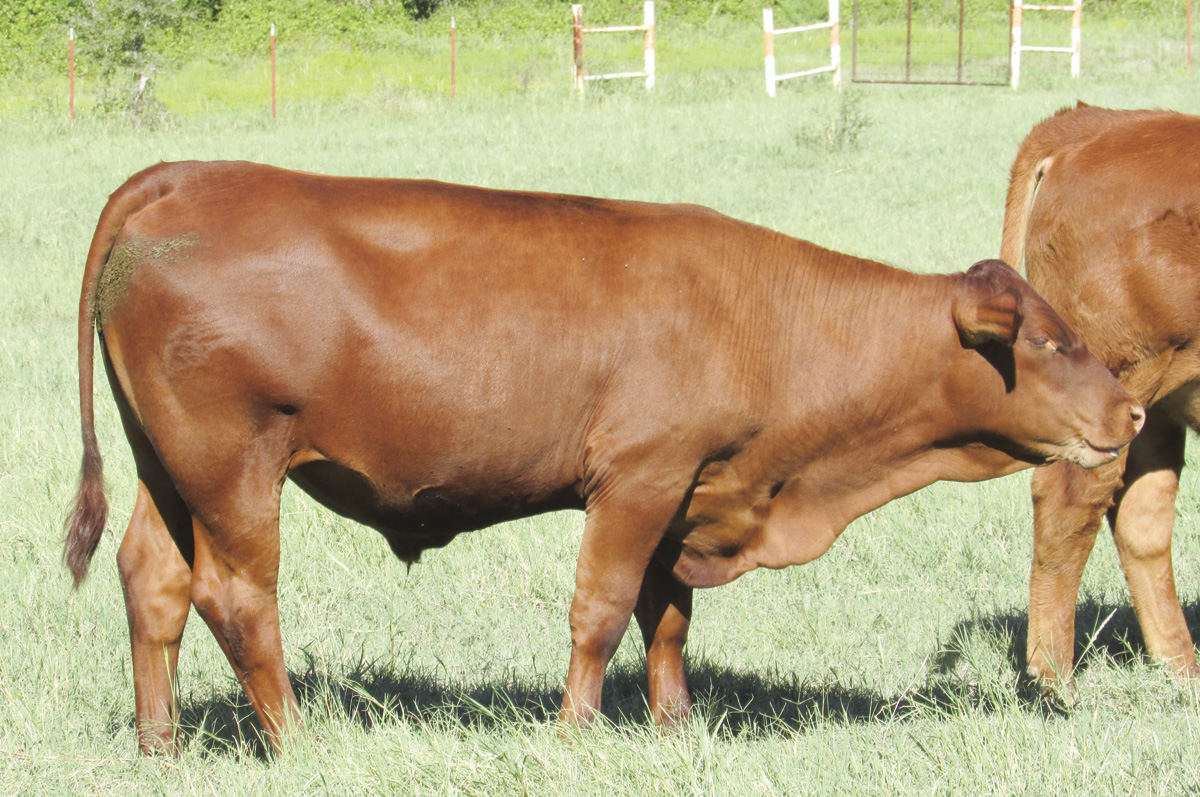
The Hotlander breed, a composite of Angus/Red Angus, Simmental, Brahman and Senepol, was developed in Texas in the 1980s. Photo by Ron Gill.
Other heat-tolerant hybrids
More heat-tolerant composites were developed in recent years, including the Hotlander (a mix of Angus/Red Angus, Simmental, Brahman and Senepol) created on the R.A. Brown Ranch in Throckmorton, Texas, in the 1980s.
The South Poll is a composite created by Teddy Gentry (member of the country music band Alabama) starting in 1989 when he wanted cattle that would thrive in the hot and humid summers of Alabama on fescue pastures. He bred Barzona to Hereford and Senepol to Red Angus, and put those crosses together to create offspring he called South Poll. His goal was moderate frame, gentle disposition, high heat tolerance, tender meat and animals that would produce more pounds of quality beef per acre off grass, with the lowest input costs.
Today, there are many options for cattle producers in hot, humid climates or areas where endophyte-infected fescue is the primary forage, necessitating a more heat-resistant animal. This gives cattlemen and women more options when it comes to selecting a breed or composite that best suits their own environment and their goals for beef production.
